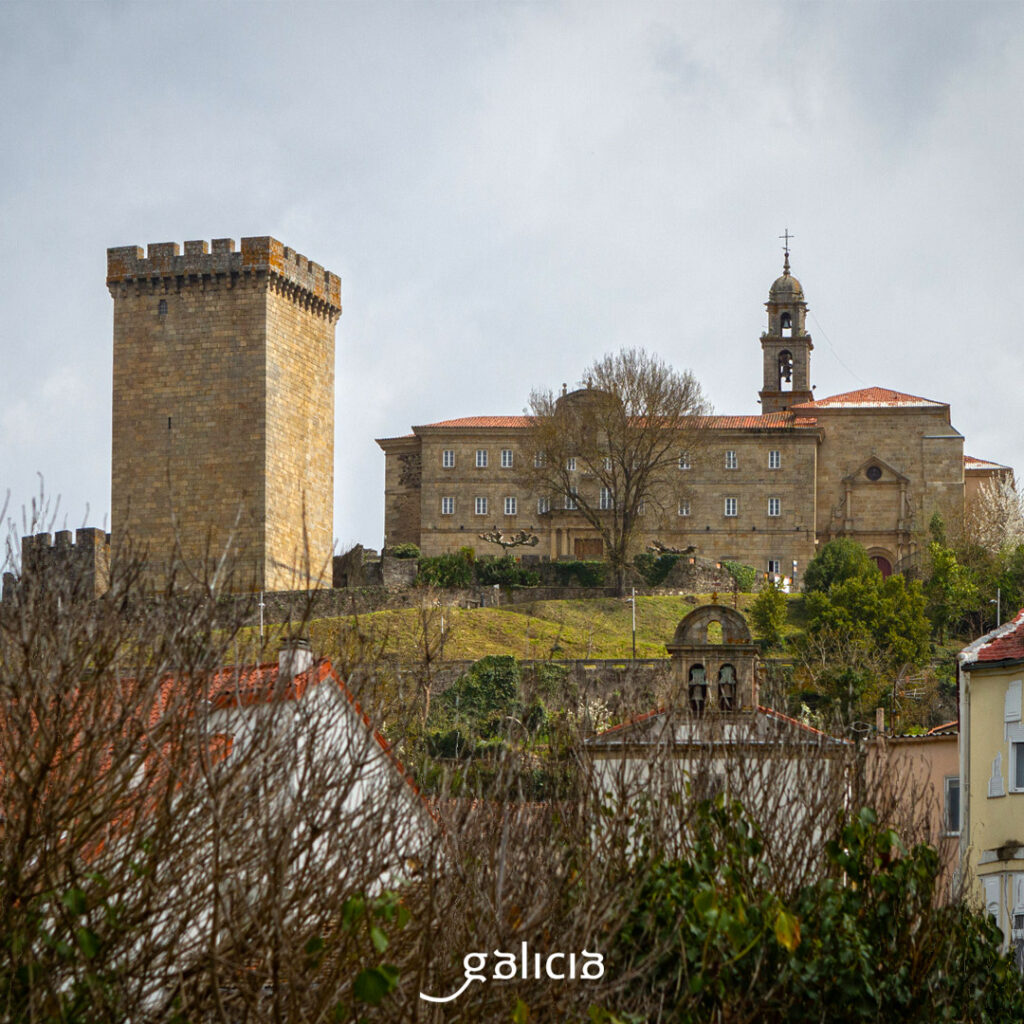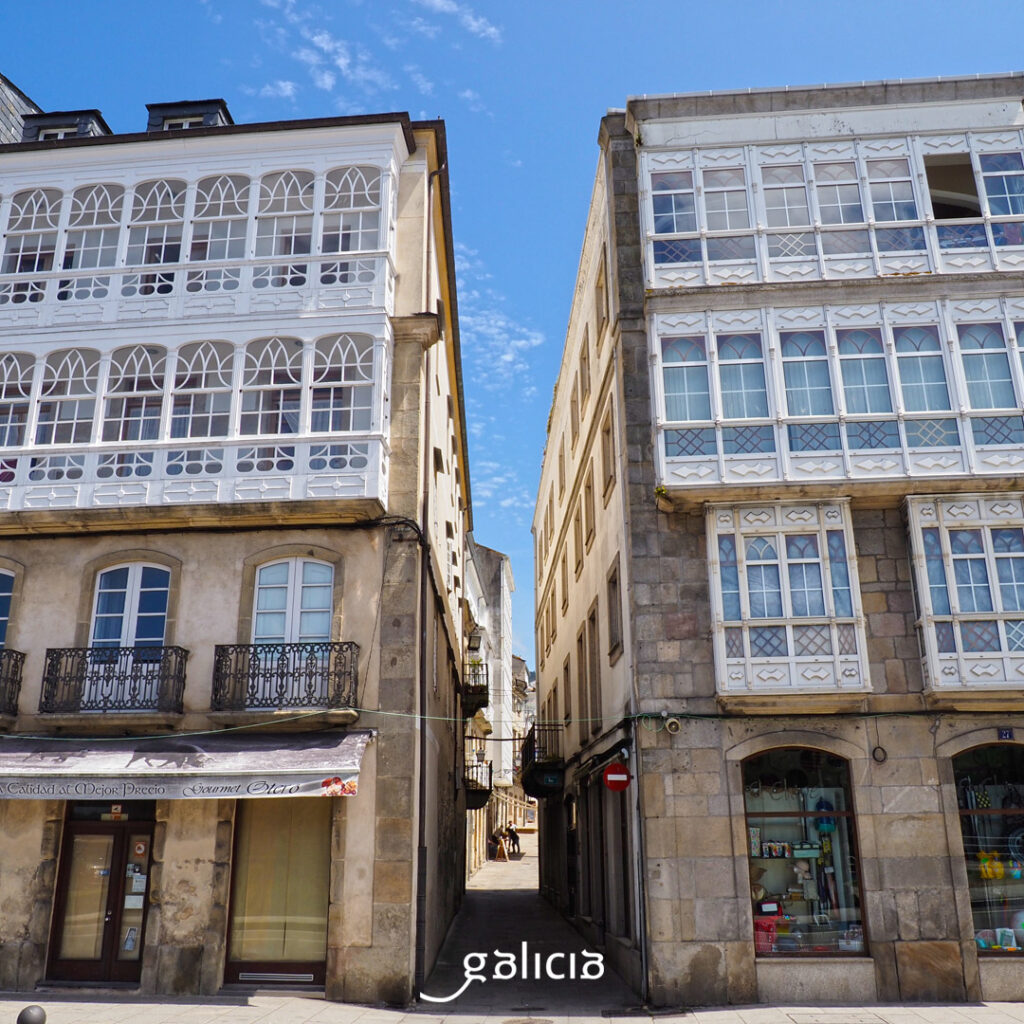Spring arrives, with the birds singing, the awakening of nature, the brightest days and… Easter Week! This means, at least, four days of rest, which we can take advantage of to visit five cities of Lugo with a special attraction at this time: the capital of the province, Lugo; the one of Terra de Lemos and Ribeira Sacra, Monforte de Lemos, and the three historical towns of A Mariña Lucense: Mondoñedo, Viveiro and Ribadeo. Let’s go there!
Lugo. We are in the oldest city in Galicia, which is noticeable as soon as you arrive, with the imposing Roman Wall, which hides a rich historic center, with the Plaza Mayor, the Cathedral of Santa Maria, the Episcopal Palace, the convent of San Francisco, the Plaza del Campo…

Returning to the Roman past, the main architectural remains are found in the Casa de los Mosaicos, the Domus del Mitreo or, already in the Miño, in the bridge and the thermal baths.
Lugo’s Holy Week has a long tradition, it has been celebrated since the 13th century. If we want to see something unique, we have to go to the procession of Holy Thursday, the Holy Supper, which also parades the Sacred Form, something extraordinary, for which the city has special permission, as well as to be exposed throughout the year in the cathedral.
To say goodbye to the city, nothing like the wine area, of well-deserved fame, in the Rúa Nova, the Cruz and the Plaza del Campo.
Monforte de Lemos. The second most populated city in the province is located to the south, in a valley crossed by the river Cabe and crowned by the mountain of San Vicente, where we find the main monument: the set formed by the Tower, the Pazo Condal and the Benedictine monastery. In Monforte we also have an Escorial, as they call Nosa Señora da Antiga, the school of the Piarists. This building has a fine art gallery, as well as the Museo de Arte Sacra das Clarisas, with the most important collection of 17th century Italian art in Galicia, which is related to the fact that the Counts of Lemos were viceroys in 17th century Naples (1610-1616).

Other places to visit are the Jewish quarter, the Ribeira Sacra Wine Center or the MUFERGA (Galician Railway Museum).
We advise you to pack some vintage clothes in your suitcase, since on March 30 and 31, coinciding with Holy Saturday and Sunday, the XX Medieval Fair is held in the historic center, with medieval camp, jousting, market, falconry exhibitions…
And, after Easter, the processions continue, because on Easter Tuesday, which is a public holiday, the procession of Montserrat, the patron saint, is held, in which the fields are blessed and, incidentally, the mayor renews the promise to dedicate the day to the Virgin one more year. In short: a very complete Holy Week.
Mondoñedo. The capital of the A Mariña Central, formerly capital of the province of Mondoñedo, had a splendid past, receiving the title of city in 1156 by Alfonso VII. The land of Cunqueiro, of the king of the Tartas, of the head of Pardo de Cela, of the “kneeling” cathedral… Mondoñedo preserves an air of another era, as if it came out of Don Álvaro’s imagination. From the slopes surrounding the valley we have a nice panoramic view of the city, with all the slate roofs, characteristic of the area. Another view in more detail, the one from the Paula, the main bell of the cathedral, which can be visited.

In Mondoñedo there is much to see: the cathedral of the Assumption, the sanctuary of the Remedios, the Hospital of San Paulo, the convent of the Conception, the Conciliar Seminary …. (you can see that it has been the Episcopal see for a long time), the Alameda, the Pasatiempo Bridge, the Fonte Vella, the Barrio dos Muíños, the Cunqueiro Museum… Outside the town center, it has an important ethnographic and archaeological heritage, with forts such as Zoñán, and natural, with the Rei Cintolo Cave, the largest one in Galicia (in March and April can be visited on Fridays, Saturdays, Sundays and holidays).
As for Holy Week, it must be said that the protagonist is the cathedral, from where all the processions depart and arrive, which are made from Palm Sunday until Easter Sunday. The most peculiar is that of the Soledad, on Good Friday, in which the procession of the Virgin is accompanied by candles and the Plorans by maestro Pacheco is sung, which can only be sung here and in the Royal Chapel of Madrid.
Viveiro. The capital of A Mariña Occidental has several important events a year, such as the Romaría do Naseiro, the Resurrection Fest and… Easter Week! The celebration dates back to the thirteenth century and since then does not stop summoning people from all over, in fact it is a Festival of International Interest. So there will be plenty of atmosphere, that’s for sure. The calendar of processions runs from Friday of Sorrows to Easter Sunday. The most remarkable moments are the Tamborrada on Easter Monday, the proclamation on Passion Saturday, the procession of Holy Thursday, with the magnificent passage of the Prayer in the Garden, attributed to Gregorio Fernandez, and Good Friday, with the articulated figures of the Encounter and the Disenclave, from the fifteenth and sixteenth centuries.

The urban center has monuments such as the Gate of Charles V, the church of Santa Maria, the monastery of Valdeflores and many guild streets and squares to get lost, and balconies and galleries in front of the estuary.
Ribadeo. We turn towards A Mariña Oriental, where Ribadeo is located, separated from Asturias by the estuary and joined to it by the Os Santos Bridge. In the city, capital of the region, the seafaring architecture is mixed with the rich Indian constructions. We find unique buildings such as the pazo of Ibáñez, the Torre dos Moreno, the castle of San Damián, the convent of Santa Clara… In addition, it has a very active commerce, which even opens on Sunday mornings, a legacy of the old Sunday market.

Its natural heritage includes the protected wetlands of the estuary; the reserve of the Eo, Oscos and Terras de Burón rivers; the Illa Pancha, and the natural monument of As Catedrais beach (be careful, since March you must book a visit in advance).
Holy Week, with a deep tradition, is as old as Viveiro, due to the Franciscan footprint in the city.





